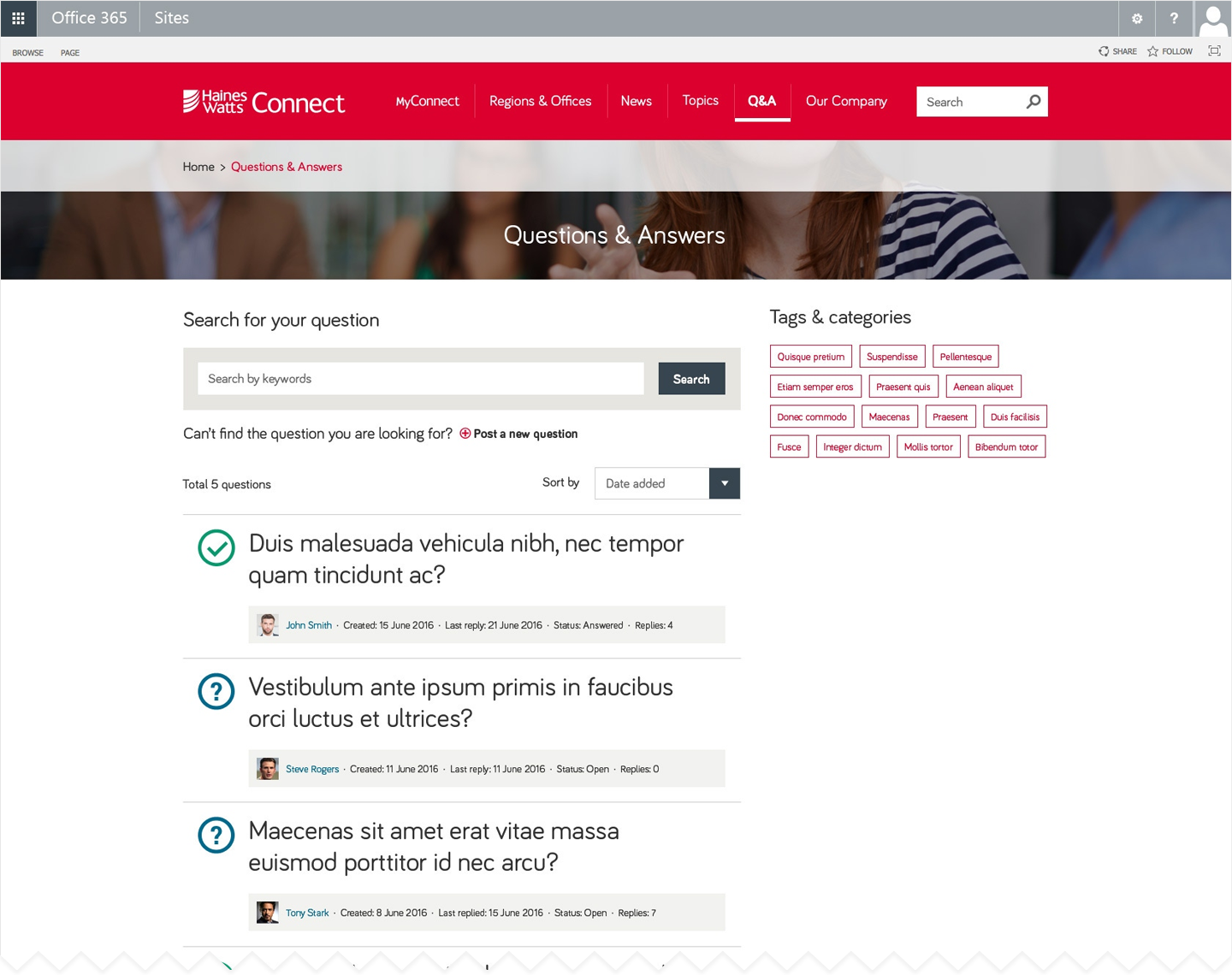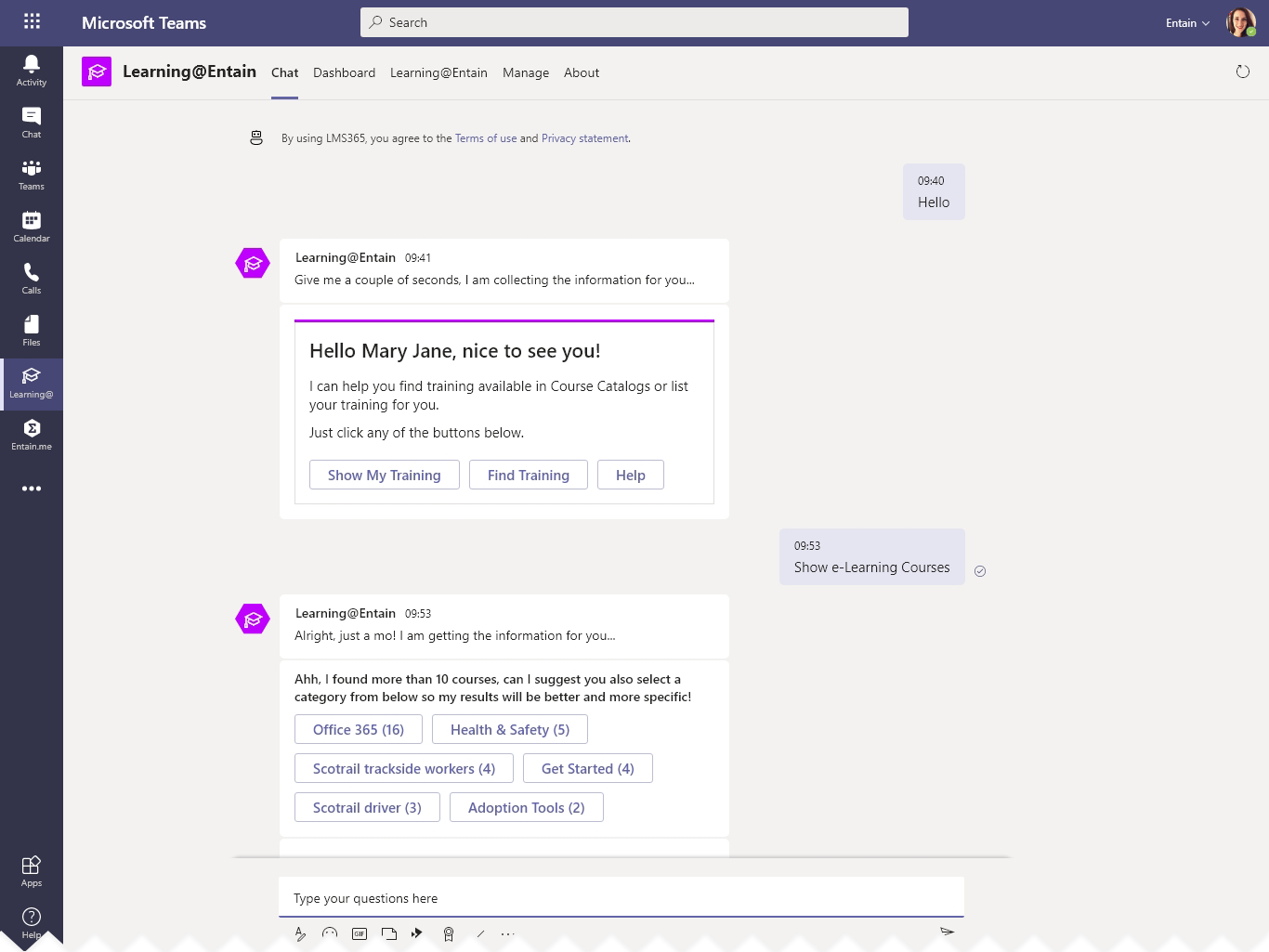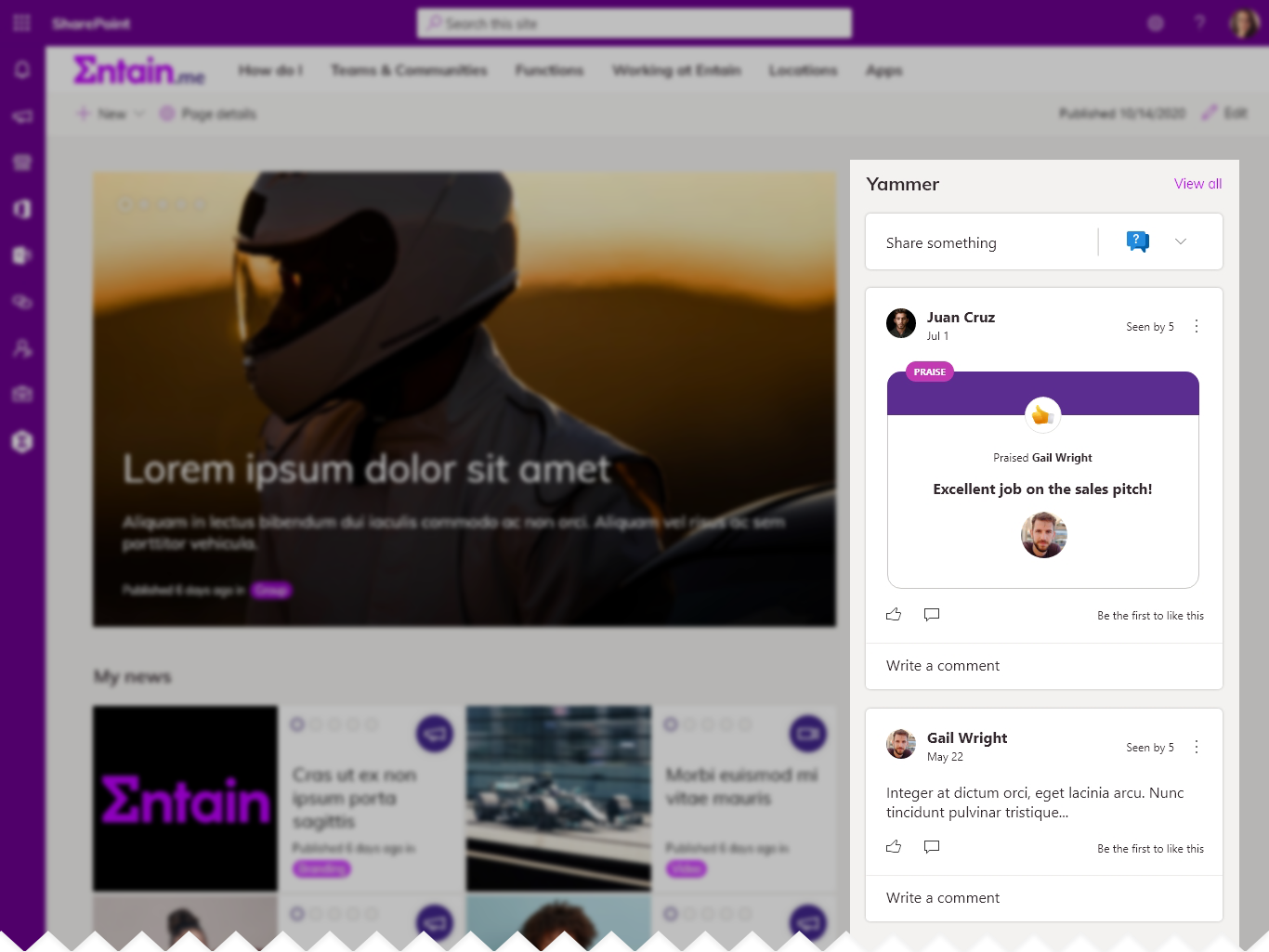
Modern intranets have many objectives. They help employees get things done productively and support a good employee experience. They deliver internal communications so employees stay informed and up-to-date. They provide access to content and information to help people carry out their role. They facilitate collaboration and provide access to knowledge and learning. And they reflect and nurture organisational culture and support employee engagement.
Employee engagement itself is a complex subject that often gets caught up in debates around definitions and measurement. There are also multiple factors which impact engagement. Intranets can successfully support employee engagement in several ways, including:
- Reflecting and amplifying the positive aspects of organisational culture
- Celebrating and recognising company, team and employee successes
- Providing more information about company values, missions and purpose
- Giving employees a voice and providing a platform for listening and dialogue
- Establishing effective communications for senior leaders
- Connecting employees and driving a sense of community across an organisation
- Supporting personal development and career growth
- Amplifying a one company identity and brand.
More specifically, there are numerous content ideas that support engagement and help make a company a great place to work. Let’s explore 15 intranet content types and features that support employee engagement.
1 Feedback polls
Using polls on an intranet is an excellent way to get a snapshot of employee sentiment on different topics. It can also drive intranet adoption through adding a light-hearted feature to the intranet homepage, especially if visitors can see the results once they’ve voted. Intranet polls play their part in driving employee engagement by making employees feel they are listened to, thereby supporting an open and relaxed organisational culture.
2 Customer success stories
Customer success stories are a staple of external-facing websites, but are not always featured on intranets. Success stories help to celebrate overall company success as well as individual team and employee contributions, and reinforce the message that employees make a difference, adding context to everyday actions.
3 Examples of living the values
Most companies have values or a mission statement. Let’s be honest, these can be pretty generic and are not always taken seriously by employees. News items or stories that actually provide examples of how an organisation is living its values and putting them into action are more likely to resonate than something more general and woollier. Content that helps an employee feel proud to be working at the company is going to support employee engagement.
4 Shout-outs and thankyous from peers
Peer-to-peer recognition is a strong way to celebrate individual achievements, generating a positive culture and sense of community. This is often done through shout-outs and thankyous from individuals to their colleagues, recognising contributions that reflect organisational values or instances where people have gone the extra mile. There are dedicated peer recognition solutions, but praise and shout-outs can also be delivered very successfully through social platforms like Yammer. Surfacing these on your intranet homepage can support engagement and culture amplification initiatives.
5 Employee blogs and photos
Having visible user-generated content on your intranet can raise adoption, but also demonstrates that the employee voice is valued, again underpinning engagement efforts. When you give everybody a voice, it sends out a strong message that opinions are valued. There are multiple ways to surface user-generated content on your intranet, but employee blogging is an excellent way to tick the box on engagement and generate lively content. Including photos submitted by employees even via a simple photo of the day feature can also be effective for engagement.
6 Podcasts
Podcasts are currently a very popular content format which are increasingly being used inside enterprises. Podcasts on particular themes can be a highly effective way to deliver targeted content to specific audience segments, supporting wider employee engagement. Podcasts have the advantage of being popular across different demographics, including frontline employees.
7 Authentic leadership comms
CEOs and other senior leaders have a major influence on employee engagement. Most intranets showcase leadership communications, but these can sometimes still come across as formal and corporate. Leadership communications that are more honest, personal, informal, authentic and even vulnerable, showing the real person behind the job title, are more likely to resonate with the workforce and better support employee engagement. During the pandemic, some CEOs started to communicate through informal videos shot at home which have been generally well-received, and which can work on the intranet too.
8 Q&As with senior leaders
Another good way to drive transparency and open communication with senior leaders is to publish questions from employees with relative questions and answers, or hold Ask Me Anything sessions and publish the related recordings or discussion threads on the intranet. Again, the more open and less sanitised these Q&As are, the more likely it is they will engage employees.

9 Crowdsourcing input from employees
Modern intranets and social collaboration platforms provide opportunities for dialogue. Having two-way channels where employees are asked their opinion by senior management and, most importantly, where this results in action can positively influence employees feelings about their employer. Specifically, crowdsourcing input and feedback from employees to influence decision-making is key here; we’ve heard examples that range from the tactical (getting input on new uniforms for customer-facing staff) to the strategic (asking for input into new strategies). Surveys, polls, discussion threads and commenting can all be used to crowdsource employee input.
10 Internal opportunities
High levels of internal talent mobility and opportunities for staff career paths are highly desirable for organisations, as they help retain the best talent and reduce recruitment costs. Advertising internal opportunities on your intranet, including new roles, secondments and training schemes, is a common way to drive awareness of these positions, as well as promoting employee engagement through demonstrating the opportunities for career growth available to employees.
11 Access to learning
Employees ability to access resources that will help them in their personal development and career growth is an underrated source of employee engagement; it demonstrates an investment in and commitment to people. Being able to search and discover courses, learning material and training assets is a strong use case for any intranet. This is becoming increasingly possible with the tight integration between learning platforms like LMS365 and SharePoint intranets.

12 Health and wellbeing themed content
Health and wellbeing is a significant theme in employee experience, and demonstrates an organisation’s commitment to its employees. An intranet can support wellbeing in numerous ways, providing health & safety information, tips and tricks, factsheets, health-related communities and more.
13 Events
An events calendar is a useful addition to any intranet homepage, especially if employees can register for specific events and add the details to their personal calendar a feature available in SharePoint Online. Event calendars also work very well to promote both learning through knowledge-based webinars, for example, and wellbeing sessions on topics like mindfulness.

14 Ideation platforms
Ideation platforms are highly mature, and are becoming a common part of the digital workplace landscape. They work by inviting employees to submit ideas usually on a particular theme or responding to a specific challenge with the ability to vote on the best ones. A company may then choose to take some of these ideas to fruition. A snapshot of the latest ideas submitted, as well as the ones that are being actioned, shows employee ideas are being taken seriously.
15 Communities
Online communities on both work and non-work themes help drive connections and foster a real sense of community and engagement within your organisation. These can range from professional Communities of Practice, to Employee Resource Groups (ERGs), to Communities of Interest on non-working themes. Whether a forum for discussing highly specialist engineering techniques or a place to swap cat videos, communities drive employee conversations and connections.
An intranet supports online communities in different ways; for example, your core intranet features may support communities or include feeds from a social platform like Yammer. A central directory of groups can also help users discover and join communities they are interested in.

Engage your employees
Employee engagement is key, and the content and features you include on your intranet can make a real difference. If you’d like to discuss how you can use your intranet as part of your employee engagement strategy, then get in touch!

